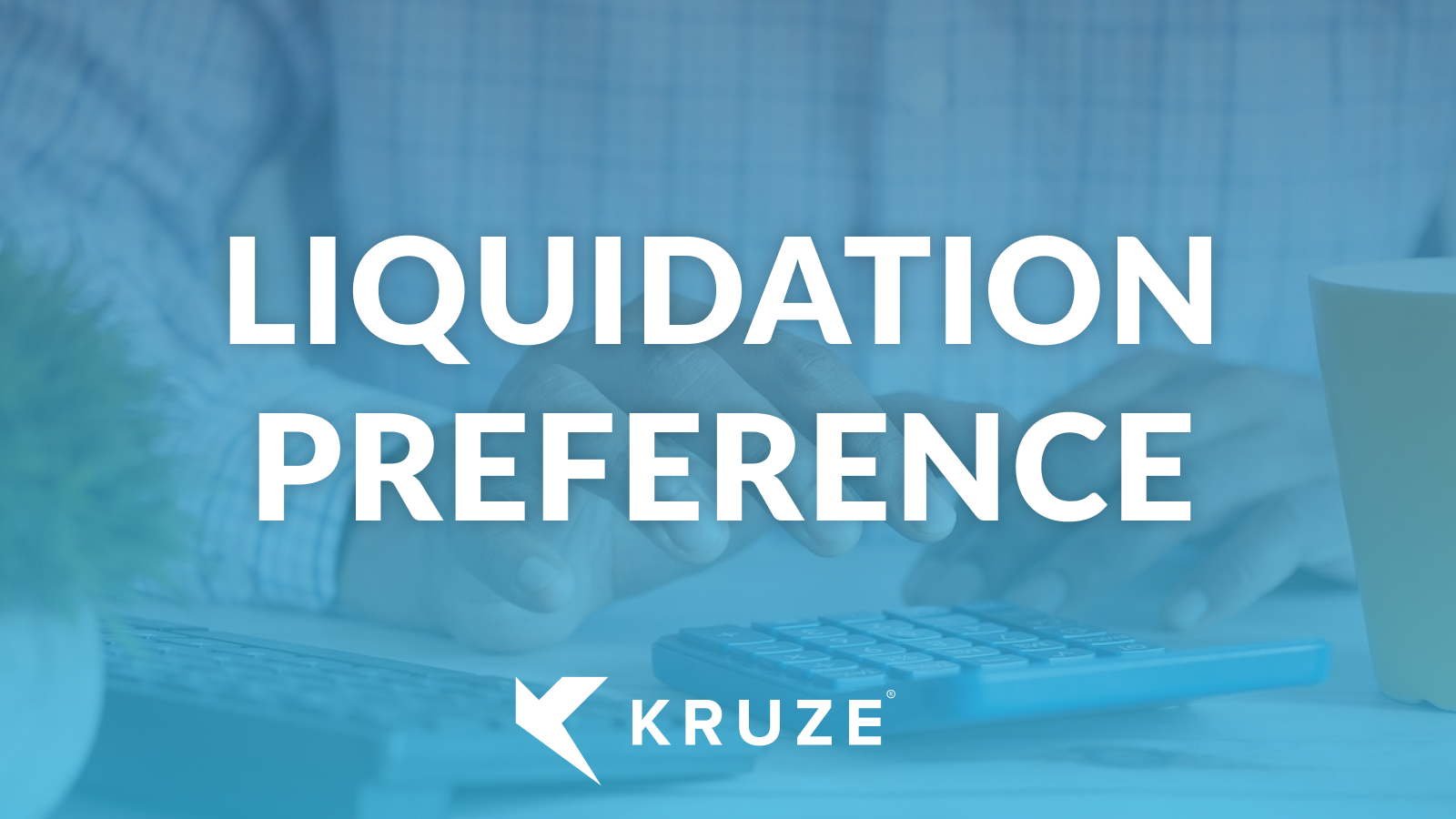
Liquidation preferences let VCs’ preferred stock get paid out first at an exit
Founders need to be aware of how liquidation preferences let VCs get their money back at smaller exits. The preferred shares that VCs purchase when they invest in startups come with powerful rights and privileges that help protect them if a company exits for a less than stellar amount. These privileges can come back to bite a founder if they’ve raised too much capital. And, they stack up as a company raises later and later stages of funding - but sometimes not equally, meaning different investors may have different motivations if a company is offered an exit.
What are Liquidation Preferences
Liquidation preferences are investor rights that determine the payout order for investors when a startup exits. A great way to think about these rights is that at an exit, a VC can choose to get paid either 1) their ownership percentage of the company, or 2) their original investment amount. Obviously the VC will pick whichever is higher, even if it means taking all of the proceeds, leaving nothing for the founders and employees. Liquidation preferences serve as a safety net for VCs, ensuring that they receive their initial investment back before other shareholders in the event of a less-than-expected exit. Assuming non-participating, 1x liquidation rights, then for big exits, like an IPO or an M&A exit that is much higher than the last round’s valuation, VCs typically don’t exercise these rights. Instead, they’ll convert their shares to common stock and get proceeds in accordance with the percentage of the startup that they own.
Pretty much all VC preferred shares are going to have these privileges - from seed preferred to Series D and beyond preferred. They stack, meaning that they are additive. Additionally, the later rounds tend to ask to be paid out ahead of the earlier preferred stock, meaning that later stage investors get a payout first in the event of a smaller exit that can’t give enough capital back to the entire investor base. We’ll explain how this can influence VC behavior later in this article - suffice to say, it can make VCs fight over an exit if the proceeds only go to the latest investors.
These rights are also “sticky,” meaning that if you give a particular term to your Series B investors, your Series C, Series D and beyond are all going to expect to get it as well. So tread carefully if you try to do any special structure to boost your startup’s valuation. We’ll discuss the structures that are very sticky next - the multiple and participation.
Founders typically think about VC’s shares in terms of ownership in the company. However, if you are a founder who has raised venture funding, you also need to think about the absolute amount of capital that you’ve raised. Because, if you sell the company for less than that amount, your investors likely have the right to talk 100% of the proceeds. And if you sell for less than your last valuation, your investors are likely to take their capital out first, meaning you are left with a smaller pie as a common stockholder.
If you raise $5 million of preferred stock from VCs, and then sell the company for $5 million, you probably get zero and the VCs take all $5 million. That’s the impact.
What they look like in a term sheet
Y-Combinator publishes a standard Series A Term sheet. Here is what the liquidation preference language looks like there:
Liquidation Preference: 1x non-participating preference. A sale of all or substantially all of the Company’s assets, or a merger (collectively, a “Company Sale”), will be treated as a liquidation.
Let’s use the YC example as a way to understand the structure of this investor right.
The structure of Liquidation Preferences
The liquidation preference structure is underpinned by three main elements: the multiple, participation rights and the preference stack.
Multiple
The multiple refers to the original investment amount, typically denoted as 1x, 2x, or 3x. A 1x, the most common scenario, ensures that investors receive their full investment amount before other shareholders. Conversely, multiples greater than 1x imply that investors will get double or triple their original investment before other stakeholders see any returns. Multiples over 1 are not very common - however, many founders took what is called ‘structure’ to get higher valuations; this is one place where structure comes in. Really, 1x is typical for a VC investment, so if your investor is asking for something higher consult with your lawyer to try to understand what is going on.
Participation
Liquidation preference participation can be non-participating, full participating, or capped. The most common in Silicon Valley startups is non-participating; if your investor is proposing something different you need some serious legal advice. A lot of buyouts or growth stage investors who purchase a lot of shares directly from founders, or who payout founders when they invest, like participating preferred. Full participating, called “participating preferred” means that the inventors not only get their money back, they can then also participate as equity investors and get paid out their percent ownership in the company.
Preference Stack
The preference stack, also known as the seniority structure, outlines the order of payout for preferred stockholders during an exit. As a startup grows and attracts new investors, each round of financing brings new preferred share that will want to be first at an exit. The seniority structures can be standard, pari passu, or tiered, each presenting its unique payout order. Standard means that the later stage investors get paid first. So if your startup has Series A, B and C preferred shares, the C get paid out before the B, the B get paid before the A, and then finally the founders get paid.
How a Liquidation Preference works: A case study
Let’s consider an example for a clearer understanding. Suppose a VC invests $3 million into a startup for a 20% stake, giving the startup a post-money valuation of $15 million. The founders retain a 70% stake, and the remaining 10% is earmarked for employees.
If the company is sold a year later for $5 million and the liquidation preference was 1x, the distribution would look like this:
- The VC would first receive their full investment of $3 million.
- The remaining $2 million would be distributed among the common shareholders (founders and employees) based on their ownership stakes.
- The co-founders, each with a 35% stake, would receive $700,000 each.
- The employees, collectively holding a 10% stake, would receive $200,000, divided among them according to their individual equity stakes.
The implications of Liquidation Preferences
While these terms are designed to protect VCs, they may have serious implications for founders and employees. In the above scenario, the founders and employees receive significantly less upon exit due to the investor’s liquidation preference. Founders need to understand what they are signing up for when they raise venture funding - the need to exit well above the amount of capital raised is one of these things.
But let’s look at a different example, where a company has raised a lot of capital in several rounds, and see how the VCs behavior may become confusing at a smaller sized exit.
Case study: VC conflict
Now let’s imagine that a startup has raised 2 rounds of financing. $10 million at an A, and then a new investor came in at a B and invested $25 million. Let’s say that the second investor insisted on taking the full round, not letting the Series A investor put in any additional capital. Both investors have liquidation preferences, but the Series B investor has seniority, meaning that they’ll get paid out first at a small liquidity event.
Let’s say that the business isn’t doing well, and it gets an acquisition offer for $25 million. The Series B investor will get paid out first, so they’ll get their money back, leaving nothing for the Series A investor (and also nada for the founders and employees). The Series A investor may not play ball on the exit, as they get nothing. It’s entirely possible that they will try to block the exit to try to get the Series B investor to give up some of the proceeds to them (which they may be able to do if each series of preferred shares need to approve an exit as a class).
Expect them, but don’t raise too much if you can avoid it
Liquidation preferences are a typical feature of VC stock. Founders must tread carefully and fully comprehend these provisions to protect their interests and those of their employees. The more money a startup raises, the higher the preference stack, the higher the VC’s expectations and the higher the exit valuation needs to be to produce meaningful outcomes for the founders and their employees.
We strongly recommend that founders think carefully about how much they raise. Raising a bit more can be smart, but raising many extra multiples of capital can damage the exit opportunities.
Understanding stacking liquidation preferences for startups: What founders need to know
An important concept that startup founders need to understand is stackingliquidation preferences. If you’re a founder, you may have heard the term before, but it can be confusing – especially when you’re balancing multiple rounds of funding. So, let’s take a step back and clarify what liquidation preferences are and how they work in different funding rounds.
What are liquidation preferences?
At a high level, liquidation preferences refer to how investors are paid back in the event of a company exit, like a sale or IPO. When investors put money into a startup, it’s typically through preferred stock (though sometimes it’s through a SAFE or convertible note). For simplicity, let’s focus on preferred stock.
When a company is sold or liquidated, the preferred investors are often first in line to get their money back – before anyone else, including the founders and common stockholders. The standard is usually a 1X liquidation preference, meaning that investors get back what they put in, before anyone else sees a dime.
Liquidation preference in action
Let’s say an investor puts $1 million into your startup, and your company is sold for exactly $1 million. In this case, the liquidation preference ensures the investor gets their $1 million back first – and as the founder, you’d get nothing. Simple, right?
Now, things get more complicated when you have multiple rounds of investment, such as Series A, Series B, and so on. The question is, what happens when each of these rounds is stacked on top of each other?
Stacking liquidation preferences: What happens next?
In a typical scenario, as your startup grows, you’ll raise money in subsequent rounds – like Series B, C, or even D. These investors might put in larger amounts of capital, and their liquidation preferences get stacked on top of the earlier investors.
When it comes time for an exit (sale, IPO, etc.), the liquidation preferences are paid out in order of the most recent round first. This is often referred to as “last in, first out” (LIFO). Essentially, the most recent investor gets paid back first, then the next round, and so on.
Example of stacking preferences
Let’s say your company raises several rounds of funding:
- Series D invests $50 million
- Series C invests $25 million
- Series B invests $10 million
And then your company is sold for $65 million.
In this case, the Series D investors, having invested the most recent capital, would get their $50 million back first. The Series C investors would then get $15 million of the $25 million they invested. The Series B, A, and the founders? They would get nothing unless the exit amount exceeded the total liquidation preferences. So in this example, they’re out of luck.
The two types of liquidation preference stacking
Now that we’ve covered how stacking works in a basic sense, let’s talk about the two main ways liquidation preferences can be handled.
- Standard waterfall (LIFO – last in, first out). This is the most common structure, like in our example above. Investors get paid back in reverse order – the most recent investors get their money back first, followed by earlier investors. This often leaves little (if anything) for the founders and common stockholders unless the exit is really lucrative.
- Pari passu (pro-rata participation). Alternatively, there’s the pari passu method, where all investors share in the liquidation proceeds on a pro-rata basis. That means everyone participates based on their percentage of total investment. So, if your Series D investors put in $50 million, they still get most of the proceeds, but your Series A and Series B investors would also get a portion of the exit proceeds.
For example, if the company sells for $65 million, under pari passu, the Series A and Series B investors would still receive a portion of their original investments, even if the total exit amount isn’t enough to fully cover all the liquidation preferences. This approach is generally seen as fairer, especially to the early-stage investors, but it might reduce the total payout for later-stage investors.
Why founders should care about liquidation preferences
Liquidation preferences are important for startup founders to understand because they directly impact how much investors (and founders) get in the event of an exit. Here’s why this matters:
- Founder incentives. If liquidation preferences are stacked heavily in favor of later investors, it means early investors (Series A or B) may not see much of a return – or nothing at all. This could make it harder to align incentives between different investors and the founders.
- Negotiation leverage. Early investors might push for pari passu terms to avoid getting “diluted” out of a favorable exit scenario. They understand that if later investors insist on strict liquidation preferences, the payout dynamics could shift, and they may be left with a smaller portion or nothing at all. Founders can use this as leverage when negotiating terms with later-stage investors.
- Future fundraising. Later-stage investors may try to negotiate their own preferential treatment by ensuring that they get paid out before previous investors. This can create tension if earlier rounds feel like they’ve been “pushed down” the payout ladder.
The bottom line for founders
As a founder, understanding the implications of stacking liquidation preferences is essential for making informed decisions during funding rounds. It helps you:
- Set the right expectations with investors
- Understand the potential financial outcomes in the event of an exit
- Navigate tough negotiations and make sure early investors are treated fairly
While liquidation preferences are often a behind-the-scenes battle for venture capitalists, as a founder, it’s your job to understand how these preferences work – because ultimately, they affect you too.
If you have any other questions on stacking liquidation preferences, startup investing, or startup accounting, please contact us. You can also follow our YouTube channel and our blog for information about accounting, finance, HR, and taxes for startups!











